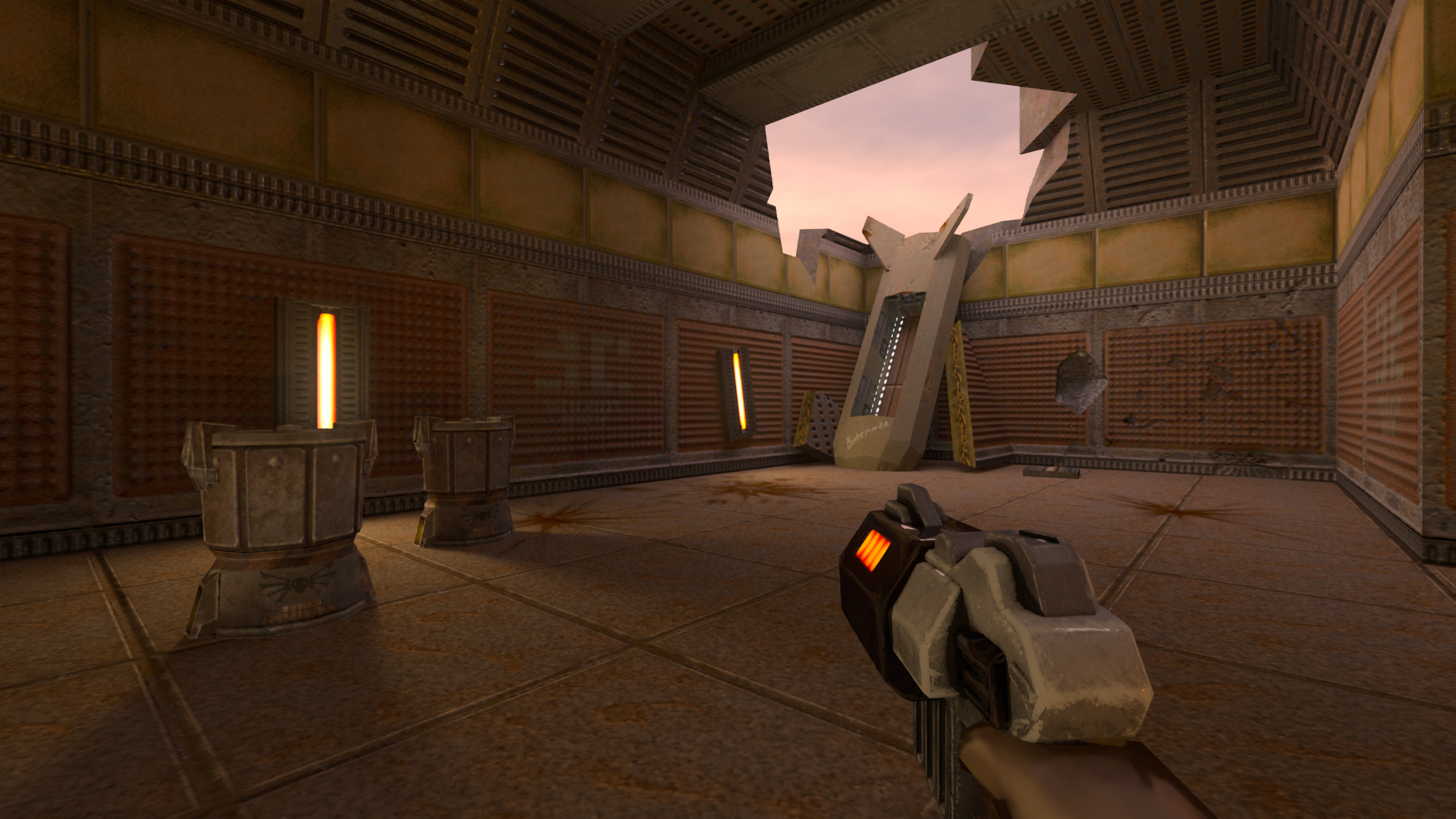

The game introduced laser tripwire mines like in Duke Nukem 3D or Half-Life, there’s an EMP Nuke that disables energy weapons on enemies, a visor that can let you hack cameras to see what’s ahead of you, and even a deployable energy shield. Another is a powerful “sonic cannon” that uses cells to do mini explosions on enemies, but can blow you up if you charge it up for too long.

One is a sniper rifle that uses the railgun’s slug ammo that can shoot through certain materials and enemy shields. Since this is an expansion, there are new weapons and items exclusive to it. (note: the rendering bug might be an issue with the source port I used, rather than the game itself.) I’ll be saving that for a future article, it’s quite a doozy.)
#QUAKE II WEBSITE FULL VERSION#
(Update: Since I originally wrote this article, friend of the site and loyal Patreon follower Bobinator made me aware of a proper full version of Juggernaut, of which I’ve since played. Meanwhile the version I found of Zaero seemed content complete, so I opted to write about that one instead.

I nearly wrote about Juggernaut instead, but the version I seemed to find online was not the final version of the game. Zaero was one of a few unofficial expansions for Quake II, with Juggernaut being the other notable one. While none of these were more popular than the official expansions, they did carve a small niche for those who were jonesin’ for more Quake II stuff but didn’t have good enough internet. Naturally with Quake II being the Next Big Thing from id software, people capitalized by selling unofficial expansions for that game as well, which competed against both of the official expansions – The Reckoning and Ground Zero, respectively. I’ve talked about one of these at length before: Aftershock for Quake, which you can read here. These would often come with a few levels or in some cases full episodes of content, for the same budget price. The simple boxy shapes of Aftershock for Quake, one of these unofficial expansion packs.īy the time Quake came out, these publishers pivoted from outright taking levels off the web to contracting people to make more original levels as unofficial expansion packs.
#QUAKE II WEBSITE SOFTWARE#
At one point id Software themselves decided to respond with The Master Levels for Doom II, a small set of levels made by a handful of the notable members of the Doom community, which came with its own compilation of Doom levels compiled from the web called Maximum Doom. Unfortunately this practice raised the ire of some developers, feeling that those publishers were profiting off the backs of independent hobbyists and budding game designers. It was interesting to go to a store and find a compilation of new levels for Doom, which was becoming one of the biggest video game cultural touchstones of the 1990s.

I get to use this cover again! It’s just as ridiculous as it was the first time.įor a period of time, a fair share of shovelware budget publishers such as Softkey, WizardWorks and others found a new way to make some easy cash: capitalizing on some of the biggest game franchises by releasing compilations of levels for these game, often downloaded off the still fresh-to-the-world internet, for $20-30 a pop. That changes today, as I look into one of the more deeper cuts of Quake II, released during that wild west period of the early-to-late ‘90s: unofficial expansion packs to games. While playing those Quake II themed levels for that Soldier of Fortune, Inc article, it dawned on me that despite having written about all kinds of retro FPS stuff for Doom, Quake and Half-Life, I hadn’t written about anything related to Quake II. Considering how id software was in turmoil at the time, I’m not surprised it feels kinda boilerplate, because they knew anything with an id logo on it would sell gangbusters. It just felt rather derivative as a game. A solid shooter with lots of colored lighting, a derivative story, and a killer soundtrack by Sonic Mayhem – with contributions by Bill Brown, Jeremiah Sypult and Rob freakin’ Zombie of all people – that just lacked the sort of bizarre mish-mash that Quake did the year prior that I enjoyed thoroughly. Wouldn’t be an id software game without some classic monster infighting.


 0 kommentar(er)
0 kommentar(er)
